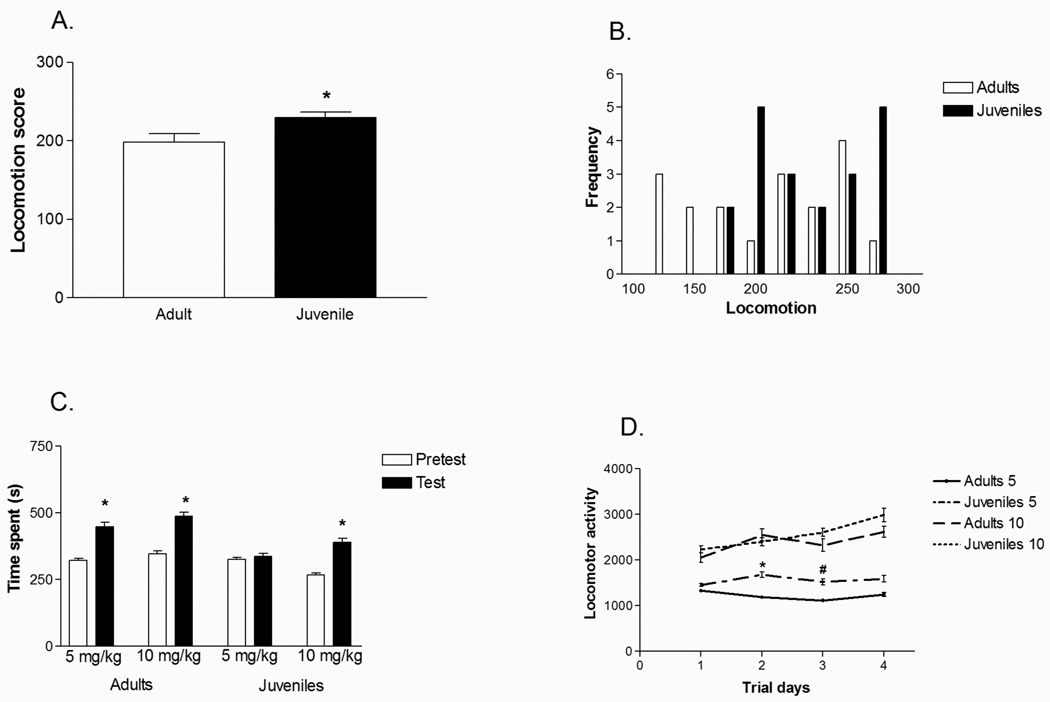Figure 1.
Behavior in response to novelty and cocaine administration between juveniles and adults. (A) Juveniles have significantly higher locomotor activity than adults in a novel environment. (B) Adults have a wider distribution of locomotor scores, representing a mix of high and low locomotor activity. Juveniles have a more narrow distribution, clustering towards the higher values. (C) Only adults establish a place preference at the 5 mg/kg dose of cocaine, while both juveniles and adults establish a preference at the higher 10 mg/kg dose. (D) Juveniles have significantly higher locomotion during the place preference test in response to 5mg/kg cocaine than adults, while both adults and juveniles have similar locomotor activity at the 10 mg/kg dose. *p <0.05; #p = 0.06; Error bars represent SEM.

